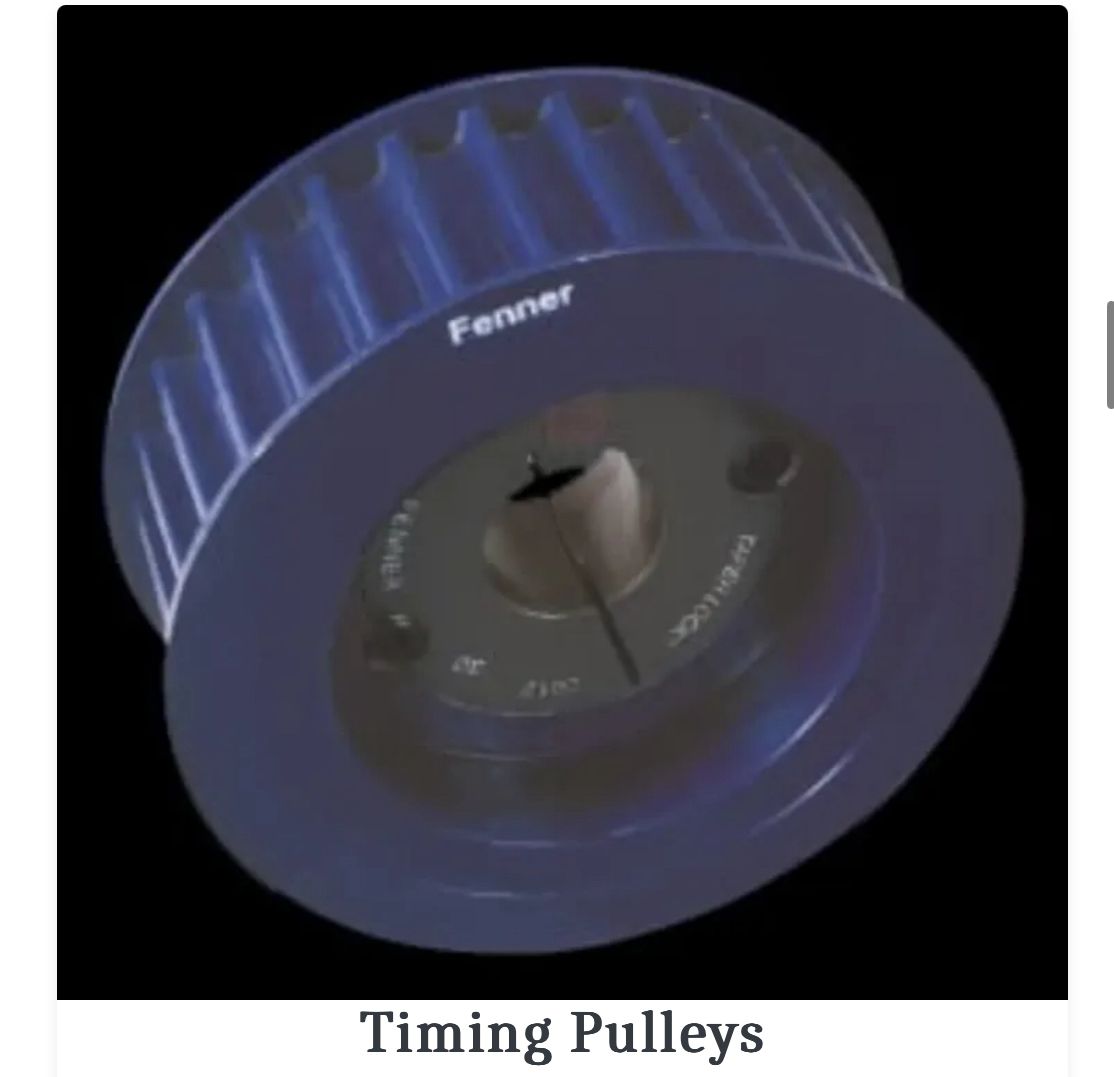
2024-04-19T10:02:47
Timing Pulleys Dealer In Delhi Timing Pulleys: A Comprehensive Overview Timing pulleys are essential components in power transmission systems, used to transfer motion and power between two parallel shafts. They are characterized by their teeth, which mesh with the teeth of a timing belt to provide a positive, synchronous motion. In this guide, we will explore the types, features, applications, advantages, and maintenance of timing pulleys. Types of Timing Pulleys: HTD (High Torque Drive): These pulleys have curved tooth profiles, offering higher torque transmission capabilities and smoother meshing with the belt. GT (Gates Tooth): GT pulleys have a trapezoidal tooth profile, providing high efficiency and reduced noise during operation. T2.5, T5, T10, AT5, AT10, AT20: These are metric pitch timing pulleys, each with a specific tooth profile and pitch size, suitable for different applications and load capacities. XL, L, H, XH: These are inch pitch timing pulleys, commonly used in industrial machinery and equipment. Features of Timing Pulleys: Tooth profile: The tooth profile determines the engagement and meshing characteristics with the timing belt. Material: Timing pulleys are typically made from aluminum, steel, or plastic, depending on the application requirements. Bore size: The bore size of the pulley must match the shaft diameter for proper installation and alignment. Number of teeth: The number of teeth on the pulley determines the speed ratio and torque transmission capability. Applications of Timing Pulleys: Robotics: Used in robot arms and manipulators for precise motion control. CNC machines: Used in milling machines, lathes, and other CNC equipment for accurate positioning. Printing machinery: Used in printing presses for synchronized movement of rollers and paper feed mechanisms. Packaging machinery: Used in packaging equipment for precise control of conveyor belts and sealing mechanisms. Automotive industry: Used in engines and camshaft systems for precise timing of valve opening and closing. Advantages of Timing Pulleys: Precise timing: Timing pulleys provide accurate and repeatable motion control, crucial in many industrial applications. Synchronous operation: The teeth on the pulley and belt ensure that motion is transmitted without slippage, maintaining synchronization. Compact design: Timing pulleys are compact and lightweight, making them suitable for use in space-constrained applications. High efficiency: The toothed profile of the pulley and belt minimizes friction losses, resulting in high efficiency transmission. Maintenance of Timing Pulleys: Regular inspection: Check the pulleys for wear, damage, or misalignment, and replace them if necessary. Lubrication: Ensure that the pulleys are adequately lubricated to prevent wear and reduce friction. Belt tension: Maintain proper belt tension to prevent slippage and ensure efficient power transmission. Cleaning: Keep the pulleys clean and free from dirt and debris to prevent damage to the belt and pulley teeth. In conclusion, timing pulleys are crucial components in power transmission systems, offering precise motion control, synchronous operation, and high efficiency. By understanding their types, features, applications, advantages, and maintenance requirements, you can effectively select, install, and maintain timing pulleys in your industrial machinery and equipment.

Have a question? Ask here!
Required fields are marked *